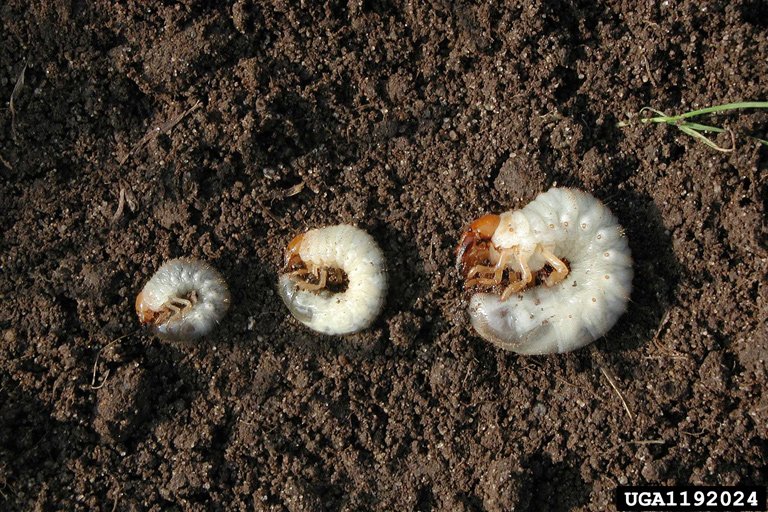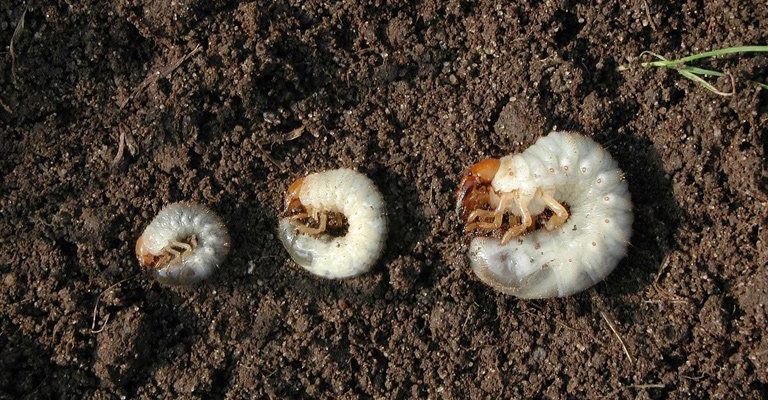
Imagine grubs as the caterpillars of the underground world. Just like butterflies can come from various caterpillar species, grubs can belong to different types of beetles. To the untrained eye, they might all appear like identical little maggots, but in reality, they belong to several species with varying behaviors and impacts on our gardens. Understanding these differences can help you tackle any pesky pests invading your space.
What Are White Grubs?
White grubs are the larvae of various beetle species, primarily in the family Scarabaeidae, commonly known as scarab beetles. Typically found in the soil, they have a distinctive, C-shaped body, which is usually white or cream-colored. They often have a brown head, and their bodies are soft and smooth. You might stumble upon these guys during a garden dig, or if you notice areas in your lawn that have dead patches, grubs might be the culprits.
These little guys have a unique life cycle. They go through several stages: egg, larva (the grub), pupa, and adult beetle. Most of the time, they’re in their larval stage underground, munching on plant roots and decaying material. This can be beneficial in breaking down organic matter. However, if your garden is plagued by a large grub population, they can cause significant damage, particularly to grass roots and other plants.
Different Species of White Grubs
Here’s the thing: not all white grubs are the same. The two most common types you might encounter are the Japanese beetle grubs and the European chafer grubs. Each has its own characteristics and levels of destructiveness.
- Japanese Beetle Grubs: These grubs tend to be very destructive—adult Japanese beetles love to feast on your plants, and their larvae can cause damage as they feed on grass roots.
- European Chafer Grubs: Though slightly less fierce, these guys can still cause a fair amount of trouble. They feed on the roots of turfgrass, causing patches to die off, especially in the summer months.
When you see a white grub, identifying its species can be essential. Knowing whether you’re dealing with a Japanese beetle or another type can help determine the right course of action for damage control.
How to Identify White Grubs
Identifying white grubs can be a bit tricky, but it’s doable. Start by observing their size and shape. Most grubs are about an inch long when fully grown, and you can tell they’re not all the same by looking closely at their size and the shape of their heads.
Another key feature to look for is the arrangement of their legs and the color of their bodies. Japanese beetle grubs have a more rounded body, while European chafer grubs have a more cylindrical shape. When you’re inspecting for grubs in your lawn, it’s helpful to dig up a small section of turf to see how many you’ve got. If you find a lot, it could spell trouble for your grass!
Here’s a fun fact: the movement of grubs can also tell you a lot. If you gently poke them, they’ll curl up tightly or wiggle around. This is a good indicator of their health and activity levels in the soil.
Why It Matters: The Impact of Grubs
Understanding the different species of white grubs isn’t just for fun; it has real-world implications for your gardening and lawn care. Grubs can be destructive pests, especially when they exceed a certain population threshold. If you’re a lawn enthusiast or a gardener, knowing what type of grubs are lurking beneath the surface can help you make informed decisions.
For instance, if you discover that you have Japanese beetle grubs, a common approach is to apply beneficial nematodes—tiny microscopic worms that can help control grub populations. Alternatively, if you’re facing European chafer grubs, you might consider using other organic or chemical treatments that target their specific life cycle.
Ultimately, identifying the species of the grubs is essential for effective management. It’s a little like having a key that unlocks the best way to protect your plants and grass from these underground munchers.
Preventing and Treating Grub Infestations
Dealing with white grubs isn’t just about recognizing them; it’s also about prevention and treatment. Here are some useful strategies to keep your lawn healthy and grub-free:
- Regular Lawn Maintenance: Keeping your lawn healthy through proper watering, mowing, and fertilization can make it less appealing to grubs.
- Lawn Aeration: Aerating your lawn can improve drainage and make it harder for grubs to thrive.
- Beneficial Nematodes: As mentioned earlier, these microscopic helpers can drastically reduce grub populations.
- Chemical Treatments: If things get out of control, there are pesticides that target grubs specifically. Just be sure to follow all safety guidelines.
Each garden is unique, so what works for one may not work for another. Pay attention to the specific conditions and needs of your lawn and plants.
So, are all white grubs the same species? The answer is no! There’s a fascinating variety of grubs out there, each with its own habits and impacts on your gardening efforts. Identifying them and understanding their life cycles can make a huge difference in how you care for your plants and lawn.
Keep an eye on those squirmy white critters, and remember that knowledge is power. With a little detective work and the right strategies, you can protect your garden from becoming an all-you-can-eat buffet for these little pests. Happy gardening!

